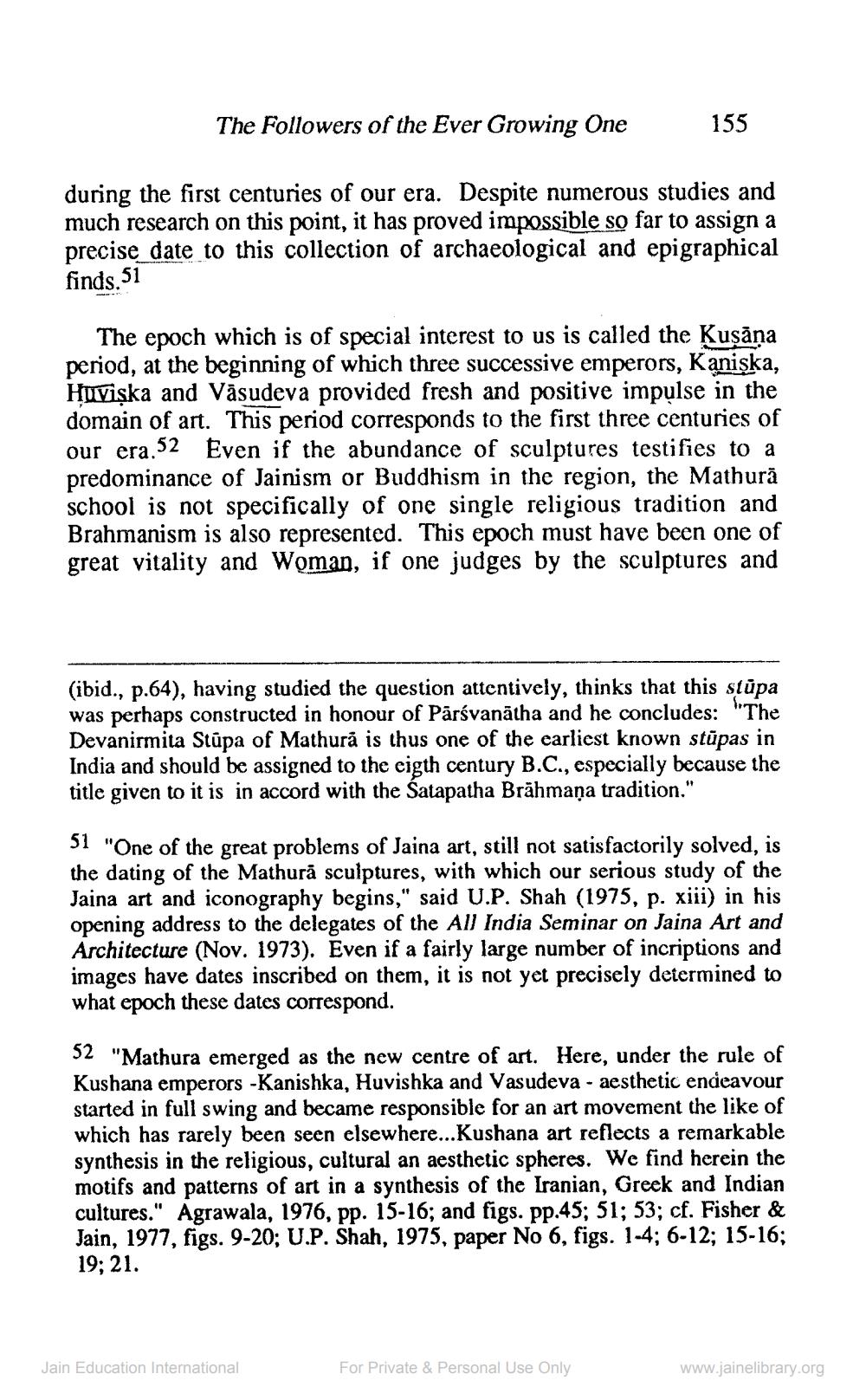________________
The Followers of the Ever Growing One
155
during the first centuries of our era. Despite numerous studies and much research on this point, it has proved impossible so far to assign a precise date to this collection of archaeological and epigraphical finds. 51
The epoch which is of special interest to us is called the Kusāna period, at the beginning of which three successive emperors, Kaniska, Huviska and Väsudeva provided fresh and positive impulse in the domain of art. This period corresponds to the first three centuries of our era.52 Even if the abundance of sculptures testifies to a predominance of Jainism or Buddhism in the region, the Mathurā school is not specifically of one single religious tradition and Brahmanism is also represented. This epoch must have been one of great vitality and Woman, if one judges by the sculptures and
(ibid., p.64), having studied the question attentively, thinks that this stūpa was perhaps constructed in honour of Pārsvanātha and he concludes: "The Devanirmita Stupa of Mathură is thus one of the earliest known stūpas in India and should be assigned to the eigth century B.C., especially because the title given to it is in accord with the Satapatha Brähmaņa tradition."
31 "One of the great problems of Jaina art, still not satisfactorily solved, is the dating of the Mathură sculptures, with which our serious study of the Jaina art and iconography begins," said U.P. Shah (1975, p. xiii) in his opening address to the delegates of the All India Seminar on Jaina Art and Architecture (Nov. 1973). Even if a fairly large number of incriptions and images have dates inscribed on them, it is not yet precisely determined to what epoch these dates correspond.
52 "Mathura emerged as the new centre of art. Here, under the rule of Kushana emperors -Kanishka, Huvishka and Vasudeva - aesthetic endeavour started in full swing and became responsible for an art movement the like of which has rarely been seen elsewhere... Kushana art reflects a remarkable synthesis in the religious, cultural an aesthetic spheres. We find herein the motifs and patterns of art in a synthesis of the Iranian, Greek and Indian cultures." Agrawala, 1976, pp. 15-16; and figs. pp.45; 51; 53; cf. Fisher & Jain, 1977, figs. 9-20; U.P. Shah, 1975, paper No 6, figs. 1-4; 6-12; 15-16; 19; 21.
Jain Education International
For Private & Personal Use Only
www.jainelibrary.org




